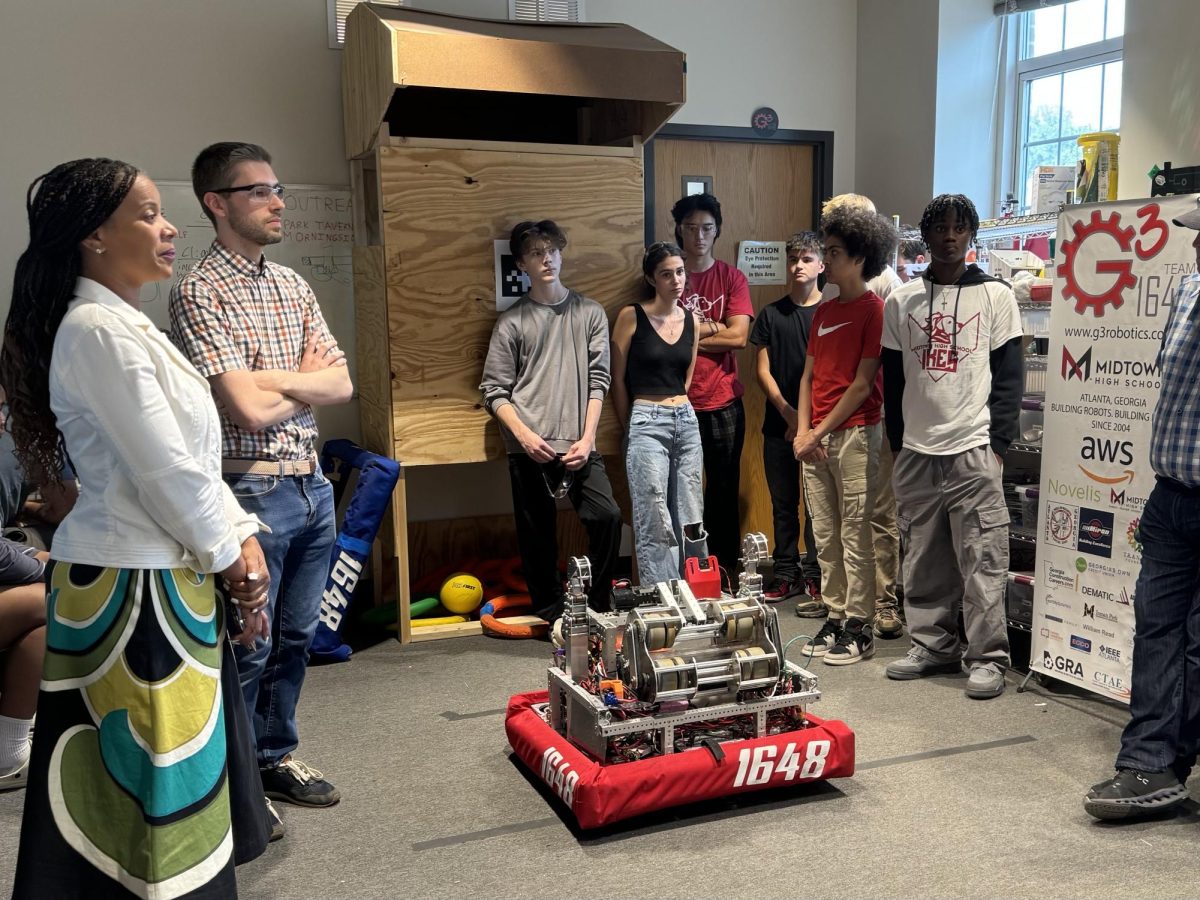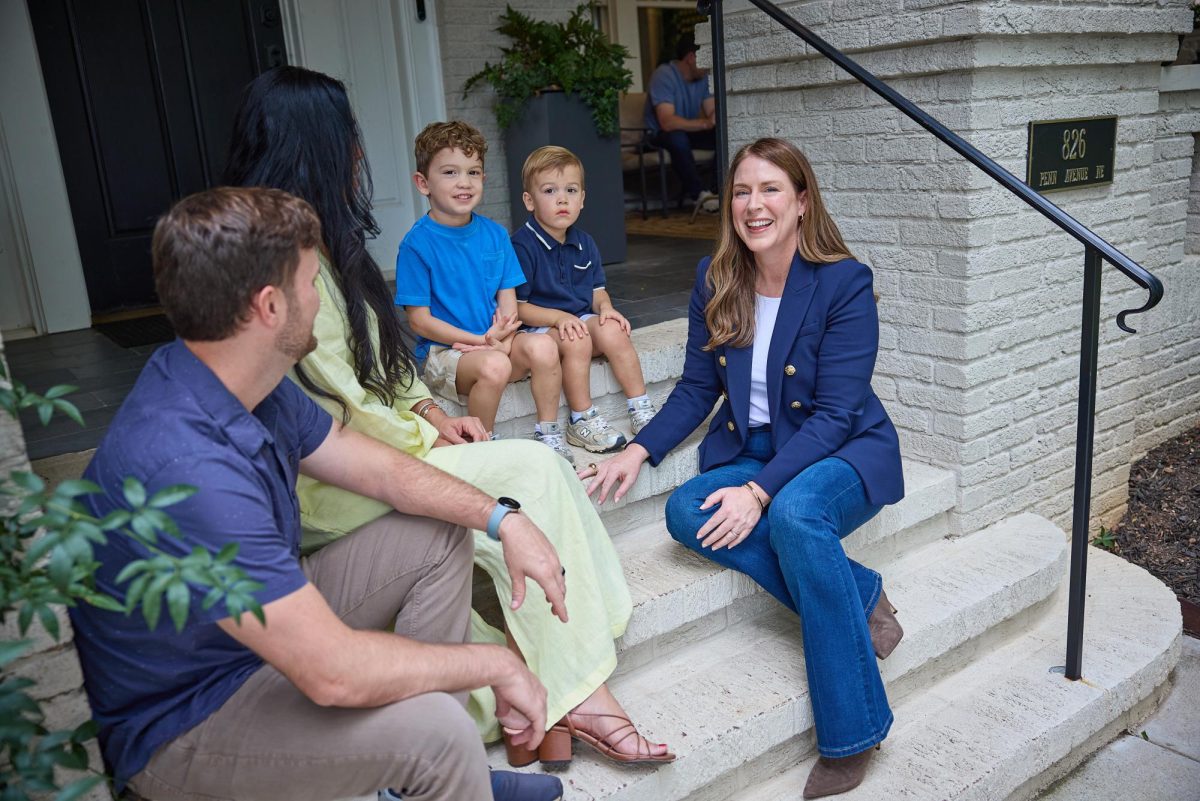Democratic State Sen. Sonya Halpern of District 39 is working on planning to introduce a bill in the General
Assembly that will kick off robotics programs in several Georgia schools with limited STEAM educational opportunities.
Halpern will be working with Midtown’s well-established G3 Robotics Team to ensure the bill creates sustainable robotics programs and helps pave the way to funding robotics programs across the state.
“I really started to think about the gap between the students who have the ability to have exposure to [robotics teams] and then the kids who don’t, for lack of those programs being in their schools or lack of the resources that their schools have,” Halpern said.
The initial bill will target the state’s bottom 25% of schools in cumulative academic performance. Halpern said she would choose 10 schools from that list to participate in a robotics team pilot program.
“I’m hoping that [this bill], which really is just trying to launch a pilot program — a three-year pilot program … gives enough funding so that these 10 schools will have the chance to start a [robotics] program and really test out the program and grow it to some point,” Halpern said.
A successful pilot program would show the importance of investing in STEAM-based activities like robotics to promote growth in schools. It could also pave the way for a statewide bill that helps all robotics teams.
“We are at the very beginning stages, and I’m really excited to be on the ground floor of this work, working in tandem
with [students] who are already part of the FIRST (For Inspiration and Recognition of Science and Technology) robotics program here at Midtown High School,” Halpern said while visiting Midtown on Sept. 23.
Mentors and students, who are a part of G3 Robotics Team, will work with Halpern to ensure the bill provides the pilot program schools with all the necessary resources, in addition to funding, to create sustainable robotics programs.
“Robotics is an extremely expensive endeavor. We are building a robot that’s more than 100 pounds and that can be 4 feet tall. It’s a big robot, and it takes a lot of materials,” G3 parent and mentor Nicole Horn said. “Tournaments are also expensive to participate in. The kids, their participation fee covers a portion of that. I think we spent $60,000.”
Every year, robotics teams in Georgia have to gather funds for robotics endeavors from building robots to tournament and travel costs. They do this without help from their school district or the state.
“Parents and the kids have to apply for grants,” Horn said. “We find sponsors. We spend a lot of time raising money. We are using some tools that are not as up-to-date as we’d like. This is the year we’re hoping we’ll be able to raise enough money to get in place some newer tools, but, I mean, we’re using things like 3D printers.”
Not all school robotics teams have a strong group of parents and mentors to build the funding for their robotics team. The goal is to have school robotics teams supported by the state, so they won’t be forced to find alternatives that they may not have access to for funding.
“It’s one of those things that I don’t think people know how expensive it is, [and also] how much it’s worth it to us as parents to raise the money because our kids learn so much; they go into school better prepared,” Horn said.
The various machines and materials robotics teams use are costly, and therefore, difficult to replace, but they allow students to learn a wide range of things.
“There are really transferable skills,” lead mentor Erik Boyle said. “I’ve used math to do this sort of analysis of a design, but also to know how to work in a team, knowing how to meet deadlines and break up responsibilities among
several people.”
Halpern said robotics programs teach kids many skills they can bring to the workforce. She believes kids across Georgia should have access to funded robotics programs that can help them grow.
“Robotics, in whole, is an opportunity for students to go places and do what they want,” Judge Dutton, robotics team member and business operations co-lead, said. “And it’s not just people that want to go into mechanical engineering or want to go into stuff like that. I know I’m not going into mechanical engineering. I’m doing more industrial design, but it really opens up opportunities for students to go meet people, do some media-type stuff like we have.”
The different aspects of robotics expand the range of interests kids could follow or decide to study in high school and after.
“We just have so many opportunities that robotics teams could have, and they open up a lot of pathways for them, and I think that’s really important for kids,” Dutton said.








